What happened to Chicago’s Japanese neighborhood?
Lake View once had a thriving Japanese community, but it fell victim to a push for assimilation.
As one Japanese-American puts it: “You had to basically be unseen.”
August 13, 2017
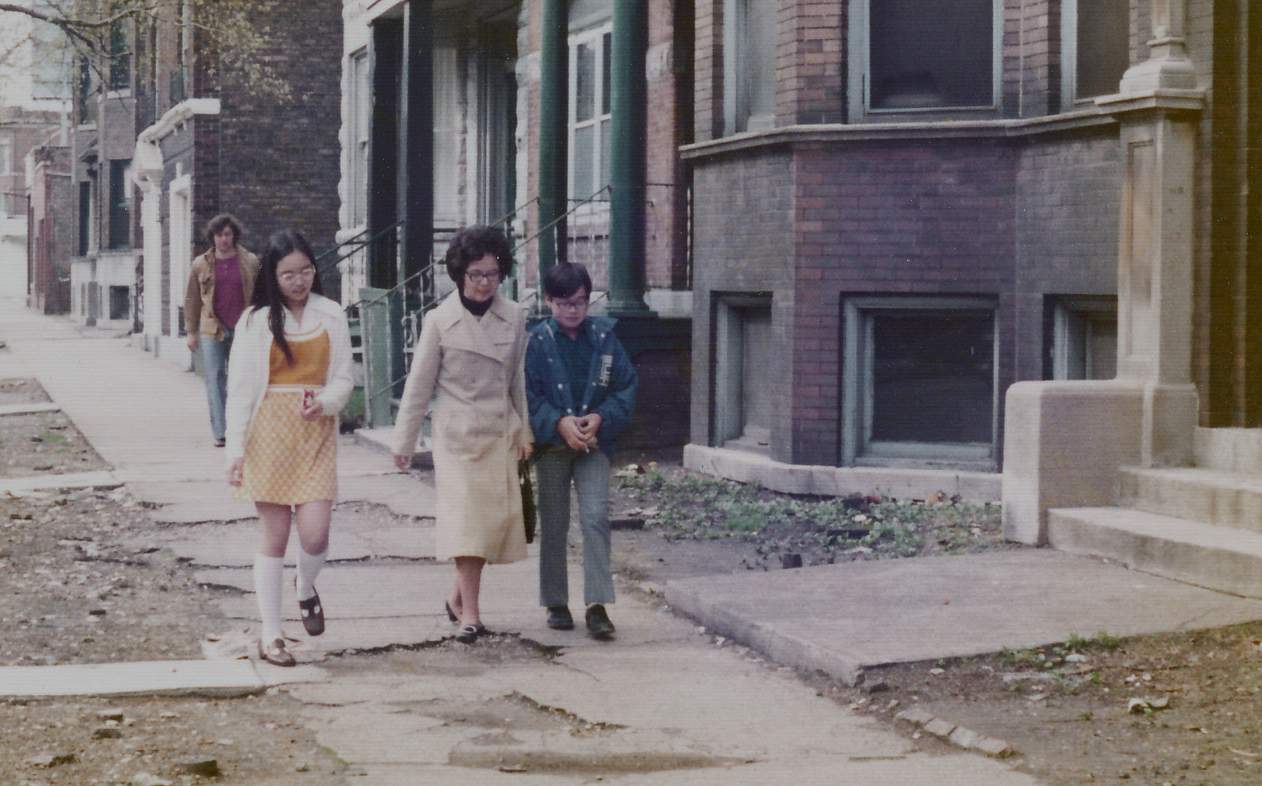
Irene Brown remembers taking trips with her mom to the Japanese market Toguri Mercantile when she was a kid in the 1990s. It was on the stretch of Belmont Avenue near Clark Street in the Lake View neighborhood in Chicago.
“It was a huge store and they had everything from kimonos to fabric to pottery,” she says. “I remember being fascinated by all the products there that were so different from things I would see in our area.”

The Toguri Mercantile Co. at 851 W. Belmont Ave. was just one of several businesses owned by Japanese-Americans in the 1970s. It’s the store that questioner Irene Brown remembers shopping at during the 1990s. (Courtesy Sulzer Library)
Irene’s family isn’t Japanese, but they liked to drive in from the suburbs to Chicago’s “Japantown” — as her mom called it — to eat at the Japanese restaurants in the area and shop at Toguri Mercantile for Japanese ingredients.
“If you wanted to buy rice noodles, you couldn’t just go into any store or order it on Amazon like we might today,” Irene says. “You actually had to go to the Japanese neighborhood.”
Irene says the neighborhood she remembers from childhood has virtually disappeared; Toguri Mercantile is now an improv comedy theater, and the other Japanese shops that lined Clark Street are now sports bars or chain stores like Target and Starbucks.
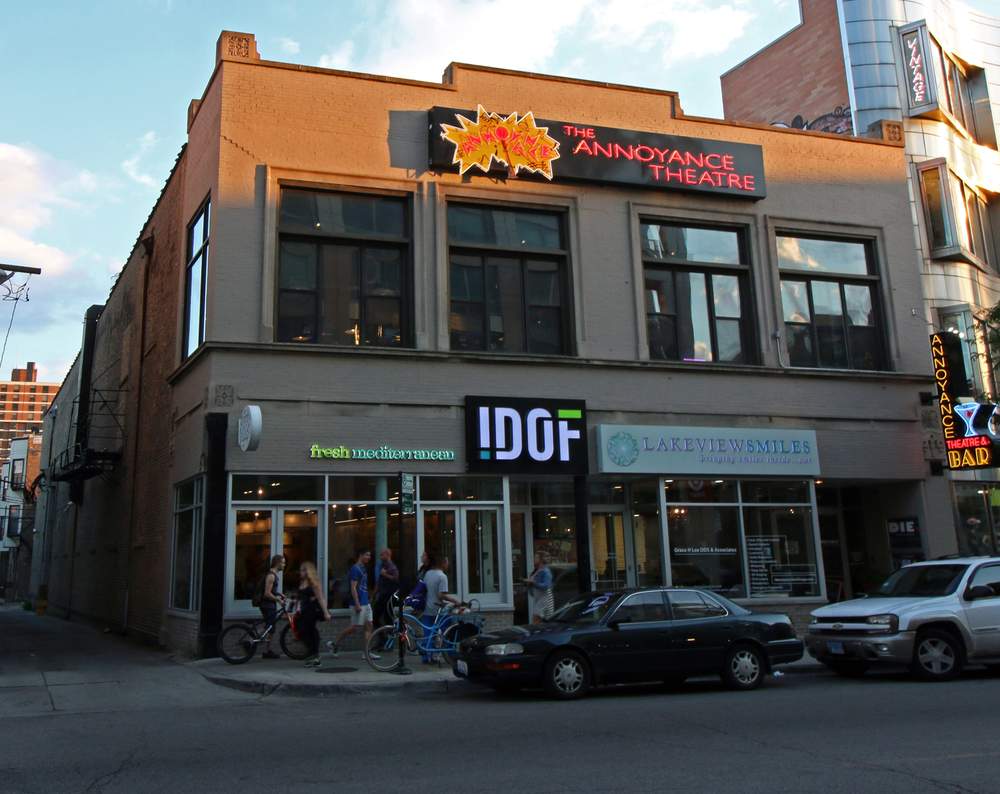
Today, the same building at 851 W. Belmont includes an improv theater, restaurant and dentist office. (WBEZ/Katherine Nagasawa)
Her question for Curious City: “Chicago has so many ethnic enclaves — it has Greektown, it has Chinatown. What happened to the Lake View Japanese-American community, and where did they go?”
The answer to Irene’s question is directly tied to a Chicago immigrant experience like no other. Japanese-Americans didn’t end up in Chicago of their own accord: The U.S. government forcibly resettled 20,000 of them to the city from World War II incarceration camps. And, as part of that effort, the government pressured them to shed their Japanese identities and assimilate into white society.
The result? Unlike cities on the West Coast, Chicago’s “Japantown” was not official and it was short-lived. The government’s efforts have had a lingering effect on Japanese-Americans, though.
As one Chicago Japanese-American tells it: “You had to basically be unseen.”
A plan for assimilation
The story begins on the West Coast in the midst of World War II. Most Japanese-Americans had been living in dense ethnic enclaves like “Little Tokyo” in Los Angeles or “Japantown” in San Francisco — in part because discriminatory laws and practices limited Japanese immigrants from buying or leasing land in other areas.
In December of 1941, the Japanese bombed Pearl Harbor. With war hysteria on the rise and the threat of another invasion from Japan, the U.S. government worried about the loyalty of the highly concentrated West Coast Japanese-American population. In February 1942, President Franklin D. Roosevelt signed Executive Order 9066, which authorized the government to remove around 120,000 Japanese-Americans living in military zones on the West Coast and incarcerate them in so-called “relocation centers” across the country.
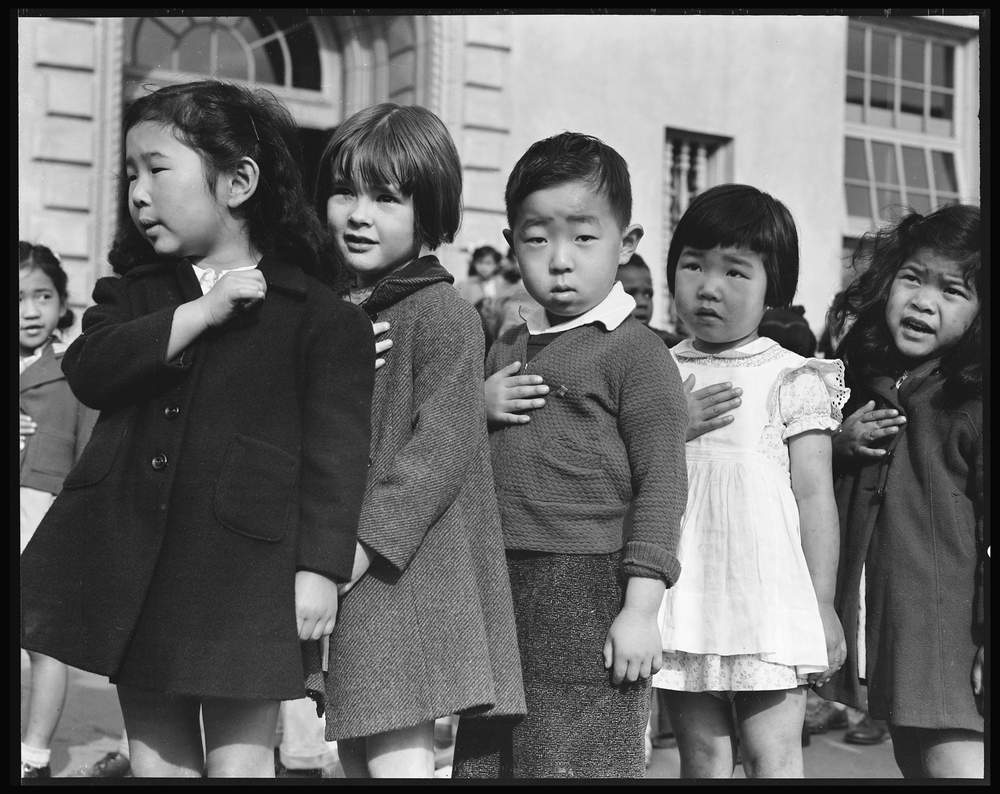
In April 1942 — days before they were forcefully relocated — Japanese-American students in San Francisco began their morning by reciting the Pledge of Allegiance. (Dorothea Lange, War Relocation Authority)

(Courtesy Dorothy and Hiroshi Kaneko Papers, JJapanese American Service Committee Legacy Center)
Keeping 120,000 people locked up was expensive, and the country needed workers who could fill the void created by the war effort. The government also saw a unique opportunity to redistribute Japanese-Americans across the country. So the War Relocation Authority — the agency originally created to manage the incarceration camps — began reintroducing Japanese-Americans into society.
Researcher Laura Fugikawa says the WRA didn’t want to return Japanese-Americans to the West Coast’s insulated Japantowns.
“The government told them that part of the reason why you were in these camps was because you hung out with your own kind,” she says.
Instead, in a 1943 address, WRA Director Dillon Meyer spoke of his vision for assimilation for Japanese-Americans: “If the leave program is successful, a large number of the evacuees will re-establish themselves in other parts of the country, where they can be absorbed readily. It is hoped that the bulk of the relocated people will stay where they strike root.”
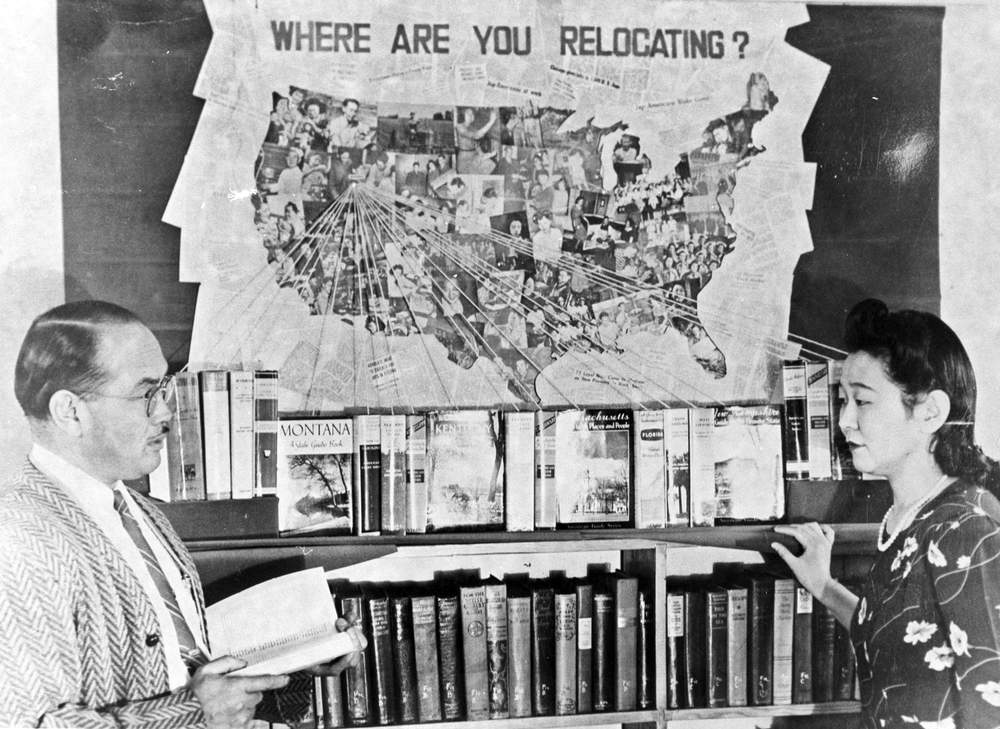
In the Minidoka camp library, a map showed destinations for resettlement around the country. (Courtesy National Archives and Records Administration)
When the WRA allowed Japanese-Americans to leave the camps, the agency required participation in so-called “clearance interviews” that included pointed questions such as:
• “Will you assist in the general resettlement program by staying away from large groups of Japanese?”
• “Will you avoid the use of the Japanese language except when necessary?”
• “Will you try to develop such American habits which will cause you to be accepted readily into American social groups?”
Fugikawa says the government’s message was loud and clear: “The government says, ‘We’ll let you go, as long as you stop acting like what we think of as Japanese and as long as you integrate into the society.’”
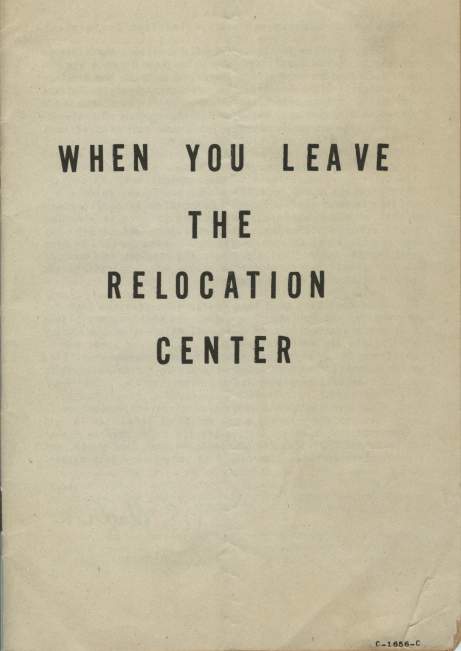
In 1943 the WRA circulated this pamphlet to Japanese-Americans before they left the camps. (Courtesy Densho, the Shosuke Sasaki Collection)
Resettlement to Chicago
In January 1943, the WRA opened its first regional field office in Chicago, a city they believed would tolerate Japanese-Americans. Unlike the West Coast, Chicago didn’t have the same pre-war racial prejudice towards the Japanese since there were only 400 of them living in the city at the time. The agency even screened a film about the promise of life in Chicago to those about to leave the camps.
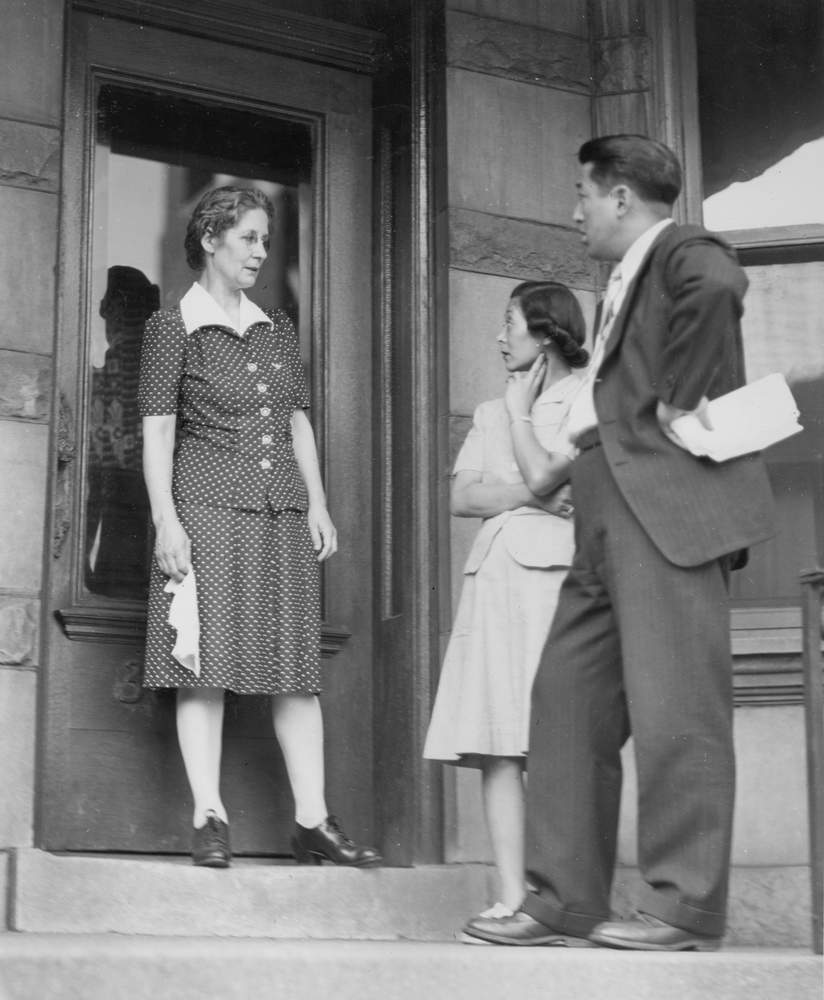
In 1943, a Japanese-American couple arrived in Chicago and approached a landlady about housing vacancies. (Courtesy Brethren Historical Library and Archives, Elgin, Illinois)
Ross Harano was just a toddler when his family arrived in the city in 1944 along with a wave of around 20,000 other Japanese-Americans. He says Japanese-Americans found plenty of work in light industries such as garment manufacturing, book binding and candy-making.
“You could get a job at McClurg, you could get a job at Curtiss Candy, or at Baby Ruth,” he says.
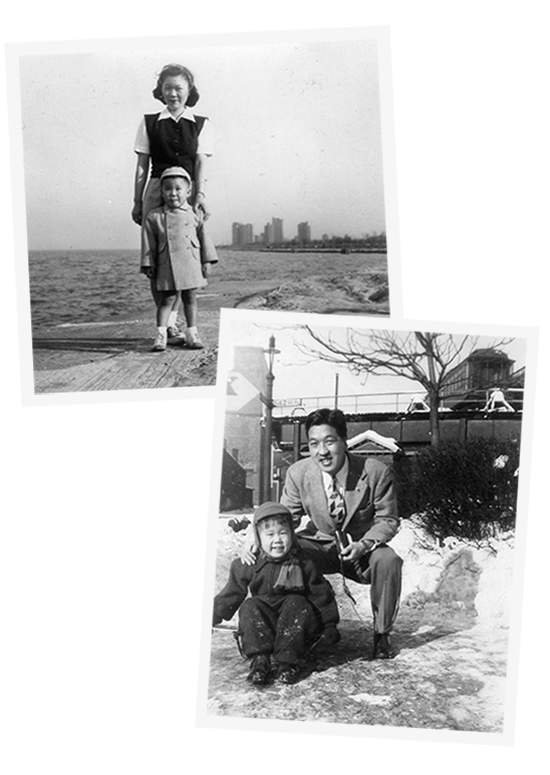
In 1945, Ross Harano’s family bought a house at 42nd Street and S. Oakenwald Ave. in the South Side neighborhood of Kenwood. It was a block from the lakefront, and across the street from the Kenwood El Station. (Courtesy Ross Harano)
Together with local civic and religious agencies, the WRA hammered at its goal of Japanese-American assimilation. For example, all residents of the Brethren Relocation Hostel — a short-term housing option for Japanese-Americans — were required to attend weekly discussion groups. Topics included: “What were the mistakes in our social life before evacuation?”; “Why did Little Tokyo develop?”; and “How much of our acceptance by Caucasians depends upon our own efforts?”
The WRA also consciously resettled Japanese-Americans across the city. Due to housing discrimination, most Japanese-Americans ended up sprinkled throughout areas between black and white communities on the South and Near North sides.
“There was no clustering,” Harano says. “You understood what you had to do. You had to basically be unseen.”
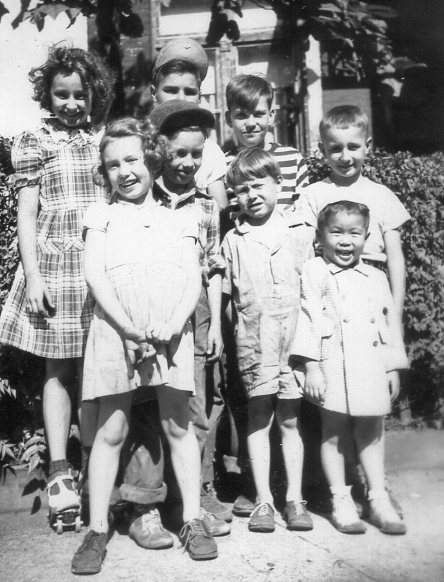
Ross Harano (first row, right) says the Midwest offered a fresh start to Japanese-Americans. "Racism was mostly a black white issue in those days," he says. "So we sort of squeezed into this whole thing." (Courtesy Ross Harano)
Small Japanese business districts formed near the Hyde Park neighborhood on the South Side and Clark and Division streets on the Near North Side. But they didn’t last long, says Lisa Doi, a researcher who studies the history of Japanese-Americans in Chicago. By the mid-1950s and early 1960s, urban renewal projects and an influx of African Americans into the neighborhoods caused whites and Japanese-Americans to move out.
“Japanese-Americans began to move northward with a broader white flight,” Doi says. “Some scholars have called it a ‘yellow flight’ that follows behind white communities as they move north and eventually out into the suburbs.”
Chicago Japanese American residences, 1940s-1970s
Residential data taken from Japanese American community directories, courtesy Lisa Doi and the Japanese American Service Committee Legacy Center
A neighborhood forms in Lakeview
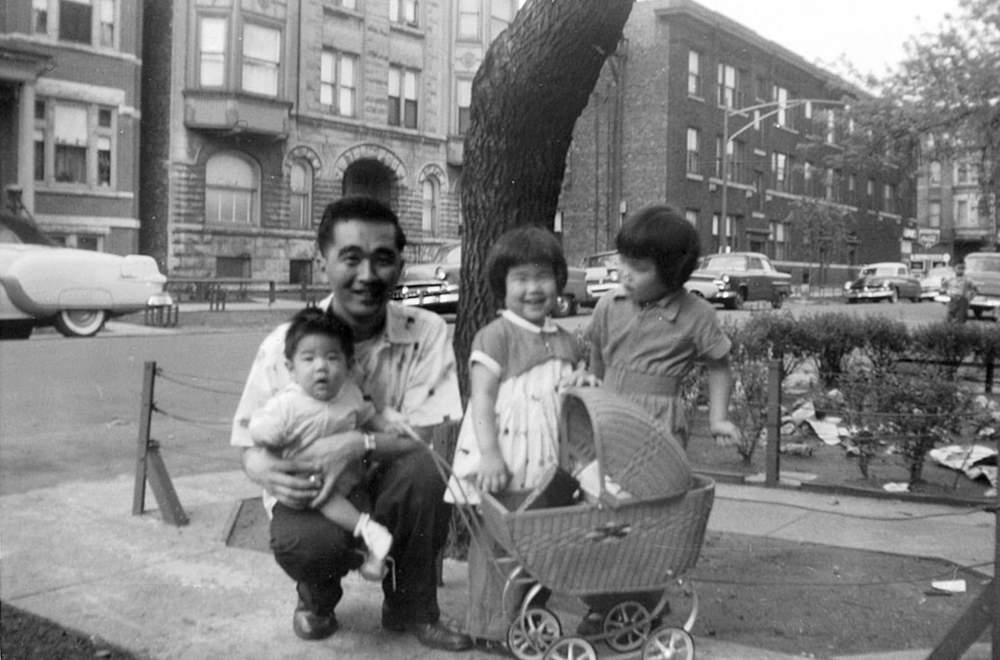
Paul Yamauchi (bottom left) remembers growing up in the Lake View neighborhood, near North Racine Ave. and West Eddy St. He would later work at The Hamburger King, his dad’s neighborhood restaurant. (Courtesy the Yamauchi family)
In the 1960s, a Japanese-American community formed in Lake View, which was considered affordable at the time. The move might seem to defy the government’s warning not to congregate, but Doi says it was actually in line with the government’s vision for assimilation.
“The long game was about housing and employment,” Doi says. “Getting Japanese-Americans into more middle-class and whiter housing was the long-term solution to [what the WRA saw as] the ‘Japanese-American problem.’”
Our questioner Irene visited Lake View’s “Japantown” in the ’90s, which was on the tail end of the Japanese-American business district’s lifespan. Japanese-Americans never formally designated the area “Japantown,” but at its peak — in the ’60s and ’70s — there were nearly 150 Japanese-owned businesses and institutions in the area, including traditional Japanese restaurants, beauty salons, dry cleaners, and markets like Toguri Brothers, where Irene went with her mom.
Paul Yamauchi grew up in the neighborhood and says at its center was the Nisei Lounge, a bar near Clark and Sheffield — named after the nisei, or second generation Japanese-Americans, who lived in the area. Today, the Nisei Lounge is one of the few businesses left from that era.
“My dad would be sitting there watching the Cubs games, and it would be all niseis there at the time,” he says.
Yamauchi was a sansei, or third-generation Japanese-American. As a kid, he says, he worked next door at his dad’s restaurant, Hamburger King, which had a side door that connected to the Nisei Lounge.
“One of my favorite activities was helping out my dad there,” he says. “My pay was a bowl of chili and fries.”

Paul Yamauchi's father, Tom, prepares a meal for patrons at Hamburger King restaurant. (Courtesy the Yamauchi family)
Many sanseis say they lived out typical American childhoods. They remember high school dances and budding romances, summer afternoons spent cheering the Cubs at Wrigley Field, and ice skating on flooded playgrounds during Chicago winters.
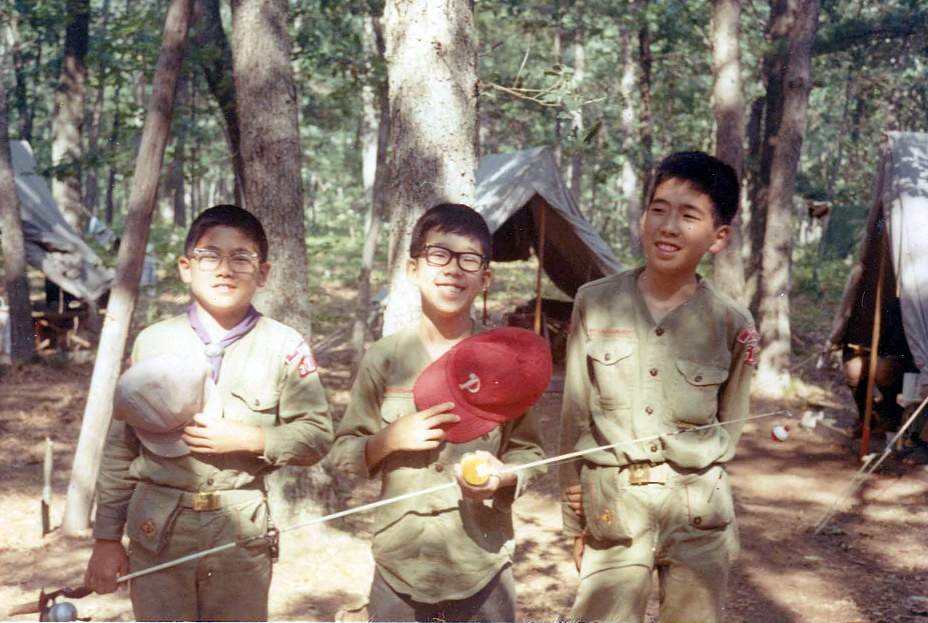
Paul Yamauchi (left) was a Boy Scout from elementary through high school. (Courtesy Yamauchi family)
But the sanseis say, as they got older, they realized these typical “American” experiences came at the cost of their families’ Japanese identity, language and culture.
Mike Higa grew up in the area and says some families prohibited their children from learning Japanese.
“They wanted to assimilate so badly that they went to that extreme,” he says. “And they probably lost a little bit of history doing it.”
Linda Oishi’s parents resettled to Chicago from the Gila River camp in Arizona. She says her dad told her to suppress her Japanese identity.
“My dad was like, you guys are 100 percent American, don’t ever forget it,” she says. “We were all striving to break away from the stigma of the war, subliminally.”
Oishi says growing up, German-Americans and Italian-Americans were not identified as the enemy the way the Japanese-Americans were.
“It was because of our faces,” she says. “So you can’t get away from that. You can’t run away from that.”
But there was a way to try to get away from it, Oishi says. And that was to achieve white middle-class markers of success.
“You have to stand up for yourself with education, really good jobs, being in professions that are respected,” she says. “I think that that was also a part of what happened to this generation as far as, ‘We’ve got to move on and get out of this stereotype.’”
The Sanseis move away
Nearly every Japanese-American family that lived in Lake View could trace roots to the internment camps. But many niseis had taken to heart the government’s push for assimilation, and their efforts eventually dissolved the neighborhood.
Linda Oishi says nisei parents didn’t expect their kids to take over the family-run restaurants, markets or dry cleaners.
“I think the sanseis were expected to go into professions that required higher education — doctors, lawyers. I mean, that was really going to be revered,” she says.
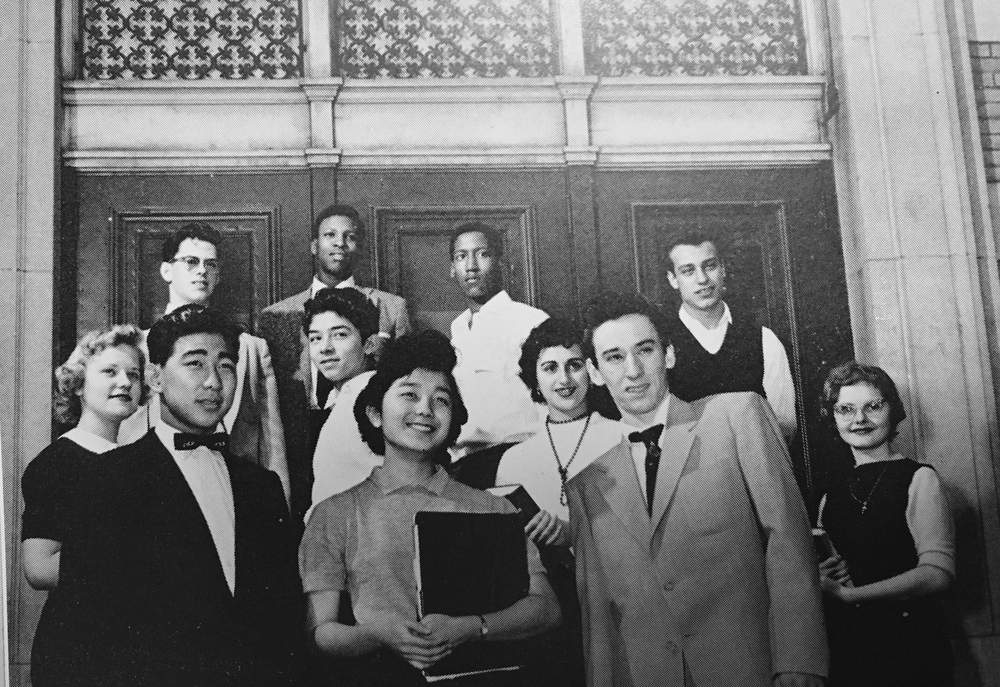
Some of Chicago’s young Japanese-Americans attended Robert A. Waller High School in the Lincoln Park neighborhood. (Courtesy Japanese American Service Committee Legacy Center)
Linda’s husband, Tracy Oishi, says that expectations for upward mobility caused sanseis to leave Lake View during the ’80s.
“As they took a higher education, they left to follow careers,” he says.
Many eventually settled in the Chicago suburbs, but there was never an effort to recreate a neighborhood like the one in Lake View. However, in recent years, a new, distinct Japanese-American enclave has formed in Arlington Heights, consisting mainly of foreign-born Japanese who arrived to take jobs for tech companies between 1990 and 2000.
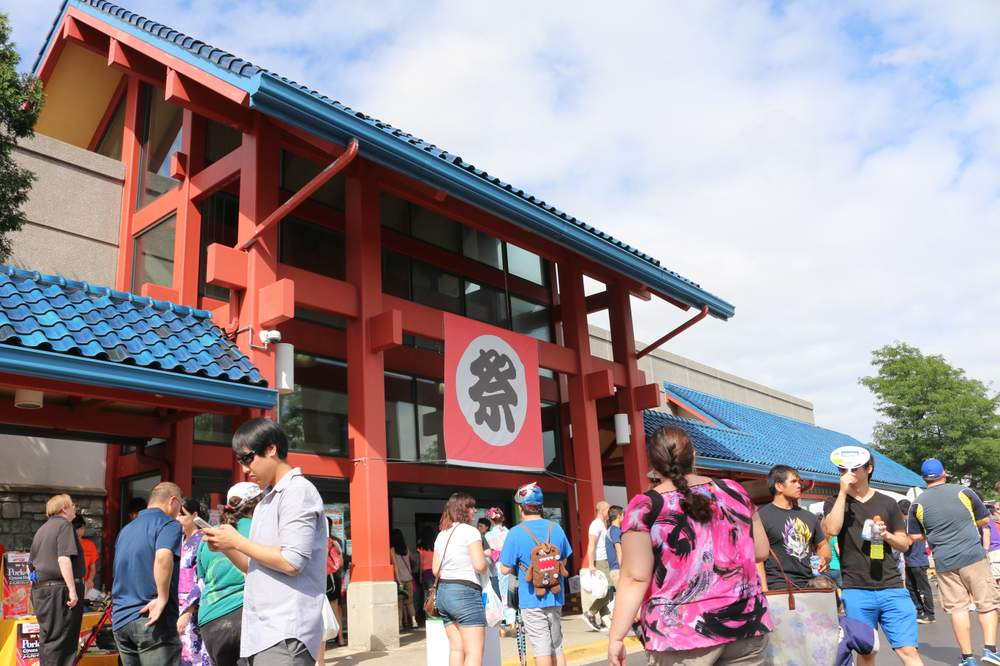
Mitsuwa Marketplace in the Arlington Heights suburb serves the community of post-war Japanese immigrants that arrived there in the 1990s. (WBEZ/Katherine Nagasawa)
As for the niseis, many continued running their small businesses in Lake View through the ’80s and early ’90s. But as they passed away, the business district dissolved.
The community today
The WRA’s plan for Japanese-American assimilation was mostly successful; in 2000, nearly three-quarters of Japanese-Americans in Illinois lived in Chicago suburbs. Nearly half of Japanese-Americans aged 25 or older in Cook County and Chicago have a graduate or professional degree. And, a recent study found that — of any Asian ethnic group — Japanese-Americans have the highest level of intermarriage to whites.
All of this — resettlement to Chicago, the rise and fall of the neighborhood in Lake View, movement out to the suburbs — happened in the span of a single generation. Linda Oishi says accelerated assimilation has had serious consequences. For one, she and others of her generation suppressed their Japanese identities, and that has had ripple effects.
“We have all these wonderful art forms — kimono making, pottery — that are just being lost through the third and fourth generations,” she says. “I don’t want that to die. I want it to be part of my kids and my grandkids, but how do you do that?”
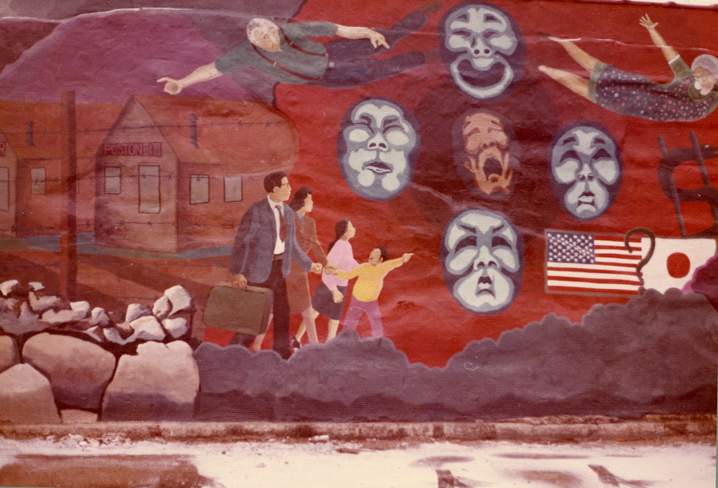
A mural that once covered the facade of the Japanese American Service Committee building showed the ambiguous cultural identities of the post-war generations. (Courtesy Japanese American Service Committee Legacy Center)
Put simply, it’s harder to pull it off without strong ties to Japanese culture or a neighborhood like the one that used to exist in Lakeview. But Elaine Kaneshiro, who grew up in Lake View and now lives in the village of Lincolnwood, says it’s possible — it just requires effort. As she’s grown older and reflected on what her family lost during the war and in the camps, she’s sought out other Japanese-Americans, even though there’s no neighborhood left.
“I am still part of the Japanese community here in Chicago, and in that setting I am very comfortable,” she says.
“Even though we don’t see each other a lot, there’s a commonality there, there’s a connection there that’s important to me. So I think there’s a community — maybe it’s not geographic.”
You can, though, find yonseis — fourth-generation Japanese-Americans — who at least nod to Lake View’s historic role.
In early August, some of them hosted a fundraiser for the Kansha Project, which sends young Chicago Japanese-Americans on pilgrimages to the Manzanar incarceration camp in California.
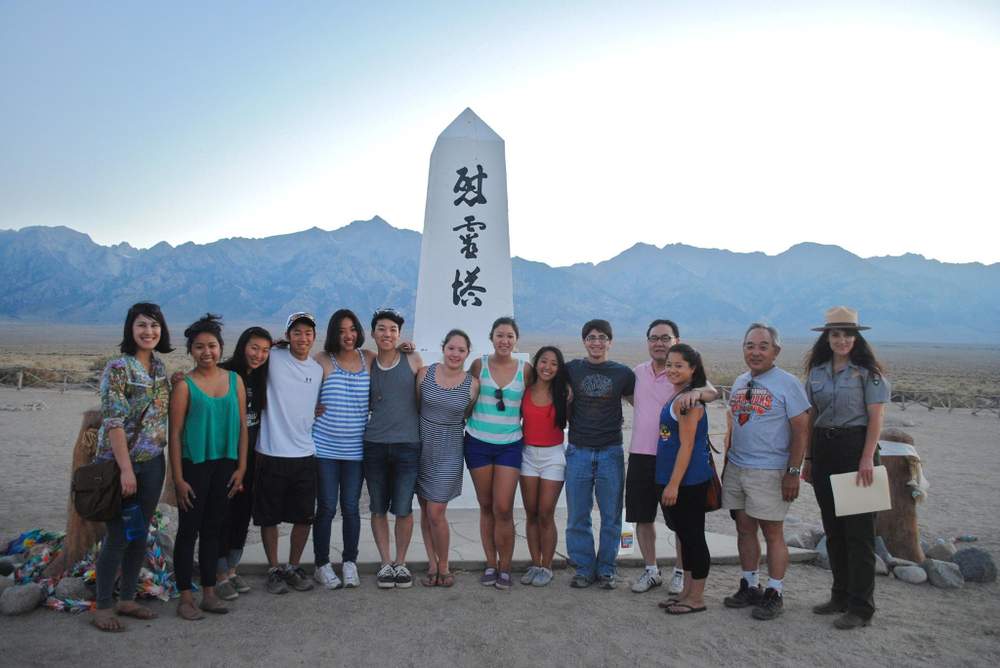
Young Chicago Japanese-Americans took a pilgrimage to the Manzanar incarceration camp in California through the Kansha Project. (Courtesy JACL Chicago)
For a rare few hours, these yonseis talked and drank Old Style beer alongside the older sanseis. The sanseis shared memories of high school dances and late night runs to Hamburger King. The yonseis talked about their trips to Manzanar and what it meant for them to connect to that history.
The group lives across Chicago and its suburbs, but when members of this scattered community wanted a venue to talk about history and heritage, they chose the Nisei Lounge, right at the center of the old neighborhood in Lake View.
More about our questioner
A lifelong Chicagoan, Irene Brown designs websites and other digital products. Her family has a long history with the former Japanese-American neighborhood in Lake View — she says her parents first started making trips there in the late 1960s, shortly after they met. Irene says she has a new understanding of Lake View after learning the history of the community.
“Growing up, I didn’t realize how many Japanese-Americans came here after World War II, specifically because they had been in the camps and were relocated,” she says.
Recently, Irene got married to Stephen Toyoda, whose parents moved to Chicago from Japan in the 1970s. Stephen’s family lived in Niles, but his late father Fumio Toyoda ran the Japanese Culture Center in Lake View for more than two decades.
“Lake View kind of pulls together the stories of both of our parents,” Irene says. “Maybe they passed each other on the streets without knowing that their children would have this connection.”
These days, Irene lives in the Ukranian Village neighborhood. But, she still makes it out to Lake View, where she takes martial arts classes at the Japanese Culture Center, where Stephen teaches Aikido.
Katherine Nagasawa is Curious City’s multimedia producer. You can contact her at knagasawa@wbez.org.
Special thanks to Lisa Doi and Ryan Yokota for providing archival research assistance, Erik Matsunaga for providing the 30 Years of Lakeview map, and the Nisei Lounge for providing space for interviews. Special thanks also to Ken Funamura, Mike Higa, Elaine Kaneshiro, Paul Yamauchi, and Tracy and Linda Oishi for participating in a group interview.
Full-screen photos courtesy of Christ of Church Presbyterian, the Tanino-Szathmary Family Papers and the Numata Collection at the Japanese American Service Committee Legacy Center, Chuckman Chicago Nostalgia, and the War Relocation Authority. War Relocation Authority photograph reproductions provided by CityFiles Press, publishers of "Un-American: The Incarceration of Japanese Americans During World War II." Photographs taken by Clem Albers and Dorothea Lange.


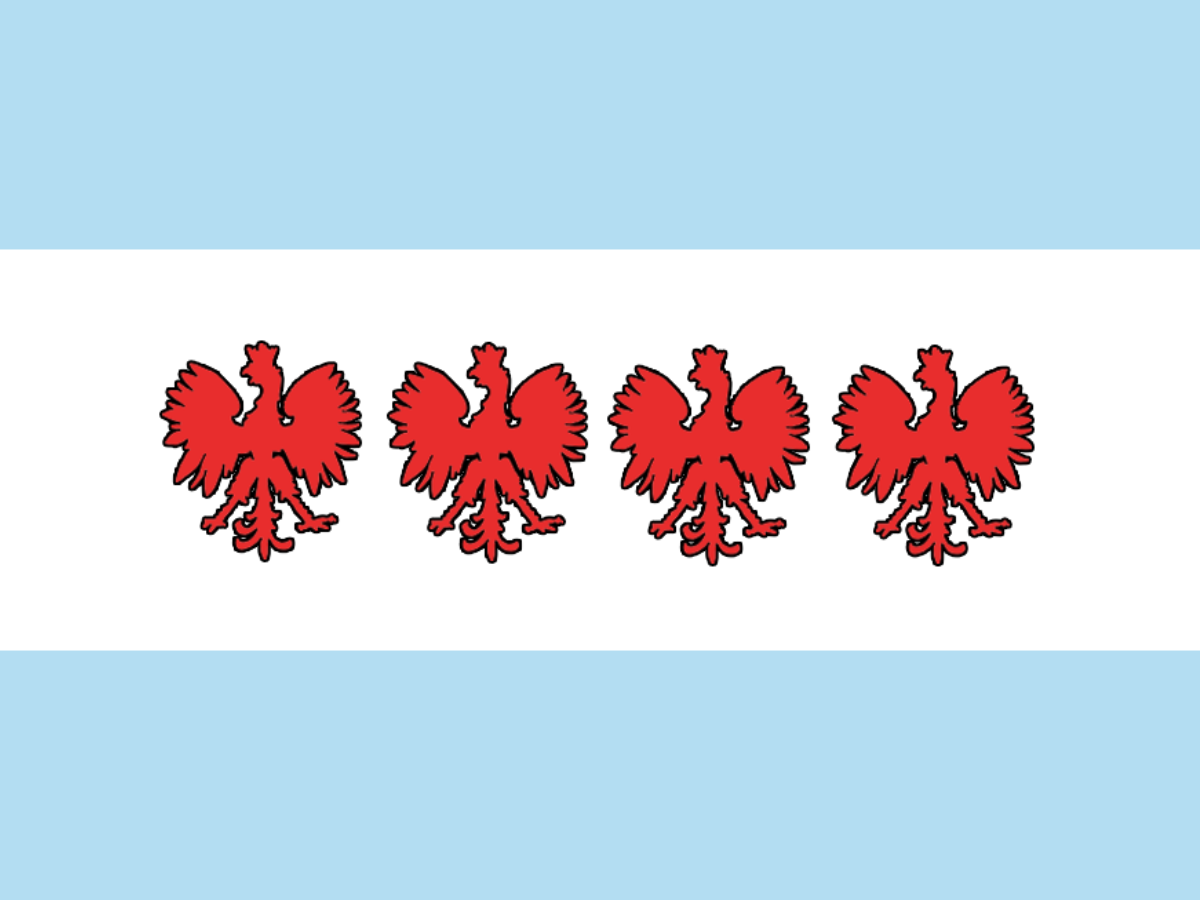


 to WBEZ
to WBEZ